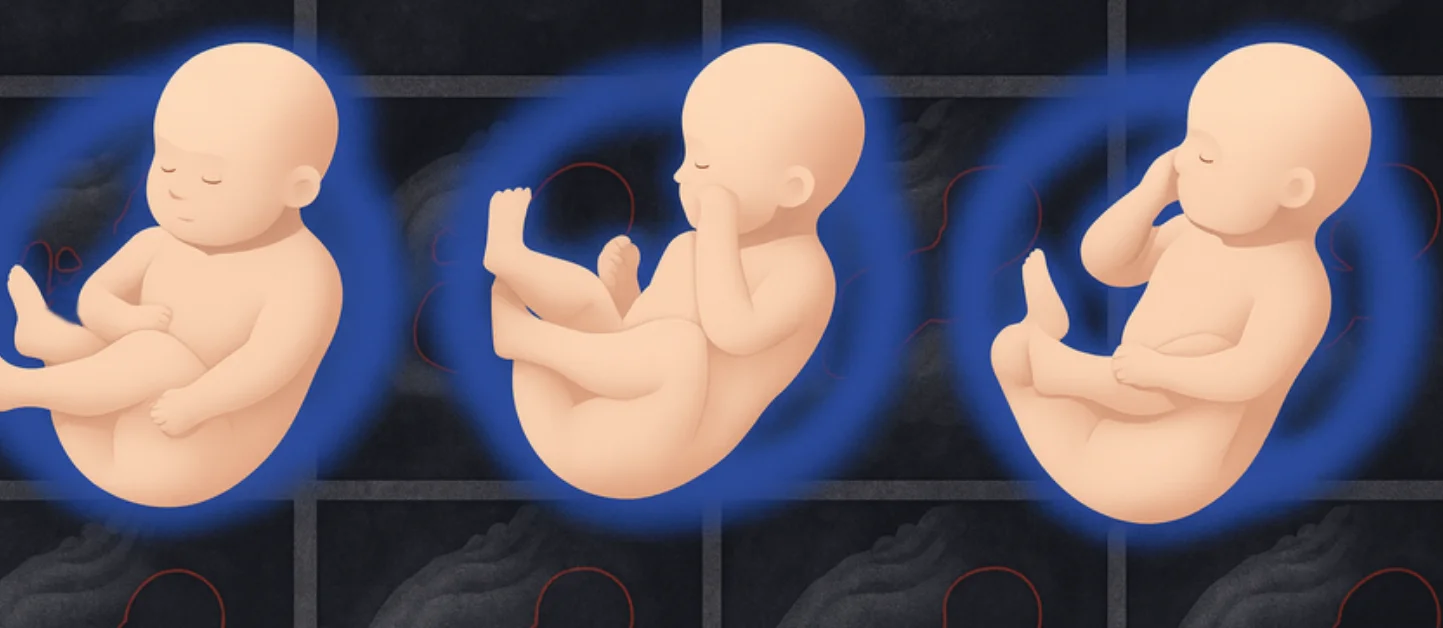AI Ushers in a New Era of Fetal Health Imaging with Advanced 3D Modeling
Artificial intelligence is rapidly transforming healthcare, offering unprecedented insights into complex biological processes. A groundbreaking development from MIT, Boston Children’s Hospital, and Harvard Medical School is set to revolutionize prenatal care, providing expectant parents and medical professionals with a dramatically more detailed and interpretable 3D view of fetal development. This innovative machine learning tool, inspired by adult 3D body modeling, accurately captures fetal shapes and movements, promising to enhance diagnostic capabilities and deepen our understanding of in-utero health.
The Limitations of Current Fetal Imaging
Traditional ultrasounds provide valuable 2D black-and-white images, offering crucial information about fetal sex, size, and potential abnormalities. While these scans are essential, they can sometimes be challenging for clinicians to fully interpret, particularly when complex anatomical details or subtle developmental issues are involved. For a deeper, three-dimensional understanding, Magnetic Resonance Imaging (MRI) is often employed. However, existing MRI data, especially when presented in 3D volumetric formats, can be difficult for the human visual system to process intuitively, making precise diagnosis a challenge. The seemingly random movements and varied body shapes of fetuses further complicate the creation of consistent and reliable 3D models from this data.

Fetal SMPL: A Leap Forward in 3D Representation
Addressing these limitations, researchers have developed “Fetal SMPL,” a novel approach that adapts a sophisticated 3D body model from computer graphics to accurately represent fetal anatomy and pose. This advanced system, a derivative of the “SMPL” (Skinned Multi-Person Linear model) initially designed for adult figures, has been trained on an extensive dataset of 20,000 fetal MRI volumes. By learning from this vast amount of real-world data, Fetal SMPL can predict the precise location and size of a fetus.
The core innovation lies in its internal “kinematic tree,” a skeletal structure with 23 articulated joints. This allows the AI to not only create realistic 3D representations but also to accurately model the dynamic movements of fetuses. Imagine a sculptor being able to precisely capture the nuanced posture and motion of a subject – Fetal SMPL achieves this for developing babies, offering a level of detail previously unattainable.
Pinpoint Accuracy in Understanding Fetal Form
The success of Fetal SMPL hinges on its ability to achieve remarkable accuracy. Through rigorous training, the model has become adept at matching fetal positions and sizes within MRI frames it has never encountered before. The researchers report an average misalignment of only 3.1 millimeters, a margin smaller than a single grain of rice. This level of precision is critical for clinical applications, allowing doctors to accurately measure key fetal metrics, such as head circumference and abdominal size, and compare them against established growth charts for healthy fetuses at the same gestational age. This capability marks a significant advancement in early detection and monitoring of fetal well-being.
Overcoming the Challenges of In Utero Anatomy
“It can be challenging to estimate the shape and pose of a fetus because they’re crammed into the tight confines of the uterus,” explains Yingcheng Liu, a lead author and researcher at MIT’s Computer Science and Artificial Intelligence Laboratory (CSAIL). “Our approach overcomes this challenge using a system of interconnected bones under the surface of the 3D model, which represent the fetal body and its motions realistically.” The system employs a coordinate descent algorithm, a sophisticated computational method that iteratively refines its guesses for pose and shape until a reliable estimate is achieved, even from complex and sometimes ambiguous data.
Outperforming Existing Models
To validate its efficacy, Fetal SMPL was compared against a leading system designed for modeling infant growth, known as “SMIL.” Recognizing that fetuses are significantly smaller than infants, the researchers scaled down the SMIL models by 75% for a fair comparison. Tested on a dataset of fetal MRIs from Boston Children’s Hospital, spanning gestational ages of 24 to 37 weeks, Fetal SMPL demonstrated superior performance. Its generated models closely aligned with real-world MRI scans, indicating a more precise reconstruction of fetal anatomy and positioning. The method proved efficient, requiring only a few iterations to achieve reasonable alignment, with accuracy stabilizing rapidly. This efficiency is crucial for clinical workflows, where time is often of the essence.
Future Potential and Clinical Integration
While early tests are highly promising, the researchers acknowledge that further validation is necessary. They plan to apply Fetal SMPL to larger, more diverse patient populations, across a wider range of gestational ages, and in various clinical scenarios, including cases involving specific medical conditions. This will help to fully delineate the system’s capabilities and limitations. The potential applications are vast, ranging from more accurate growth assessments to improved detection of congenital anomalies. This advancement aligns with the broader trend of AI revolutionizing healthcare, mirroring progress seen in areas like AI-driven diagnostic tools for parasitic diseases and predictive analytics for healthcare supply chains. You can explore more about AI’s transformative impact in healthcare on Smart AI Wire.
Beyond the Surface: Towards Comprehensive Internal Modeling
Currently, Fetal SMPL focuses on analyzing the external surface of the fetus. The next frontier for this technology involves modeling the internal anatomy. The research team intends to enhance the tool to create volumetric models that capture inner structures like organs and muscles. This would provide a more holistic view of fetal health, enabling a deeper assessment of internal development. Such upgrades would bring the models closer to fully representing the complexity of a human fetus, but even in its current form, Fetal SMPL represents a significant leap in 3D fetal health analysis. Experts like Kiho Im, an associate professor at Harvard Medical School, note that this approach “will not only improve the diagnostic utility of fetal MRI but also provide insights into the early functional development of the fetal brain in relation to body movements.”
The compatibility of Fetal SMPL with existing models like SMPL and SMIL also opens up unprecedented opportunities for longitudinal studies. Sergi Pujades, an associate professor at the University Grenoble Alpes, highlights that this allows researchers “to study human shape and pose evolution over long periods of time,” offering a unique way to quantify how growth and motion are impacted by various conditions. This research is a testament to the rapid advancements in AI for understanding human biology, similar to how AI is being used to forecast complex competitions or optimize battery management in devices like the iPhone.
Conclusion: A New Perspective on Fetal Development
Fetal SMPL stands as a pioneering achievement in applying advanced AI to prenatal imaging. By creating detailed, dynamic, and highly accurate 3D models of fetuses, this technology promises to equip medical professionals with more powerful diagnostic tools and offer expectant families a clearer window into their baby’s development. As AI continues to integrate into diverse fields, its application in understanding and safeguarding the earliest stages of human life marks a profound step forward, ushering in a new era of precision and insight in fetal healthcare.
